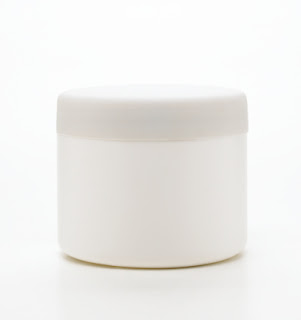T.L. asks:
Nikki, how can I tell which products contain protein and which ones don't? I believe I'm protein sensitive because I deal with dry, brittle feeling hair after using conditioners with wheat protein, but I'm aware that other proteins may not be so obvious. What should I look out for?
Read On for a Comprehensive List>>>
CN Says:
Proteins in Hair Products
Cocodimonium hydroxypropyl hydrolyzed casein
Cocodimonium hydroxypropyl hydrolyzed collagen
Cocodimonium hydroxypropyl hydrolyzed hair keratin
Cocodimonium hydroxypropyl hydrolyzed keratin
Cocodimonium hydroxypropyl hydrolyzed rice protein
Cocodimonium hydroxypropyl hydrolyzed silk
Cocodimonium hydroxypropyl hydrolyzed soy protein
Cocodimonium hydroxypropyl hydrolyzed wheat protein
Cocodimonium hydroxypropyl silk amino acids
Cocoyl hydrolyzed collagen
Cocoyl hydrolyzed keratin
Hydrolyzed keratin
Hydrolyzed oat flour
Hydrolyzed silk
Hydrolyzed silk protein
Hydrolyzed soy protein
Hydrolyzed wheat protein
Hydrolyzed wheat protein
Keratin
Potassium cocoyl hydrolyzed collagen
TEA-cocoyl hydrolyzed collagen
TEA-cocoyl hydrolyzed soy protein
After searching for an answer to the above question, I thought of one myself. I've never seen a comprehensive list of humectants, and knowing how to successfully identify them may aid in better product choices. The following is taken from Tonya McKay-
"Hair exposed to very dry air without protection can lose its moisture, develop an unpleasant texture and can become unruly, flyaway, and frizzy. It also can become more prone to breakage and split ends. Conversely, unprotected exposure to excessive moisture and humidity can swell the hair cortex, causing the cuticle scales on the exterior of the hair shaft to become ruffled and giving hair a coarse, unpleasant texture. Clearly, neither scenario is desirable."
Low Humidity
In extremely low-humidity conditions, such as a cold, dry winter air, there is no appreciable amount of water in the air for the humectant to attract to the surface of the hair. In this particular type of climate, the best one can hope for with most traditional humectants is for them to prevent evaporation of water from the hair into the environment. Also, under these circumstances, there is some risk of the humectant actually removing moisture from the cortex of the hair itself, creating the problem it was intended to prevent.
That’s why in dry climates it is important to use conditioning products which rely on strong moisturizers rather than traditional humectants. However, it is interesting to note that new humectants are being developed that perform well even in low humidity (such as hydroxypropyl bis-hydroxyethyldimonium chloride and dihydroxypropyltrimonium chloride).
High Humidity
In high-humidity conditions, such as summertime in the southeastern United States or the tropics — where the relative humidity can easily reach or exceed 90 percent during the day — there is a tremendous amount of moisture in the air. This can be disastrous for curly hair. If curly hair is dry and damaged, it is very porous, and easily absorbs water from the air. In high-humidity conditions, this can cause curly hair to swell so much that cuticles are raised, making the surface of the hair very rough. These cuticles can then become entangled with cuticles of adjacent hairs and create a huge, tangled mass, which is prone to breakage. Also, curly hair swollen by excess water can lose its curl pattern, creating the dreaded summer frizz.Humectants
Clearly, products heavy in humectants will only exacerbate problems with humidity-induced frizz. Some humectants can also develop a sticky feeling when they become saturated with water, which is certainly an undesirable characteristic for hair. Thus, in tropical and subtropical climates, it is essential to maintain well-moisturized hair that is in good condition (which will be less prone to absorbing water from the hair). But it is preferable to use products containing fewer humectants or humectants with less hygroscopic capacity."
1,2,6 hexanetriol
Butylene Glycol
Dipropylene glycol
Glycerin
Hexylene Glycol
Panthenol
Phytantriol — enhances moisture-retention, increases absorption of vitamins, panthenol, and amino acids into hair shaft, imparts gloss
Propylene glycol
Sodium PCA
Sorbitol
Triethylene glycol
Polyglyceryl sorbitol
Glucose
Fructose
Polydextrose
Potassium PCA
Urea
Hydrogenated Honey
Hyaluronic Acid
Inositol
Hexanediol beeswax
Hexanetriol Beeswax
Hydrolyzed Elastin
Hydrolyzed Collagen
Hydrolyzed Silk
Hydrolyzed Keratin
Erythritol
Capryl glycol
Isoceteth-(3-10, 20, 30)
Isolaureth-(3-10, 20, 30)
Laneth-(5-50)
Laureth-(1-30)
Steareth-(4-20)
Trideceth-(5-50)
taken from this article.
Damn...I believe that we all need to go back to school and major in chemistry! The article that I took the 2 ingredient lists from is ridiculously invaluable!
